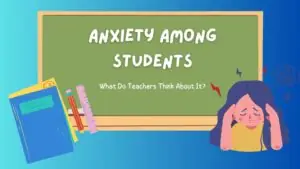According to a recent ABC News report, a significant number of college students in the United States, already grappling with food insecurity, are now facing the possible loss of their enhanced food stamp benefits following the end of pandemic-era rules.

✅ AI Essay Writer ✅ AI Detector ✅ Plagchecker ✅ Paraphraser
✅ Summarizer ✅ Citation Generator
Key Takeaways
- Amid the COVID-19 pandemic, the U.S. Department of Agriculture expanded SNAP (Supplemental Nutrition Assistance Program) eligibility for college students. The changes potentially added up to 3 million students to the program.
- Now, with the public health emergency declared over, the SNAP program is set to revert to its pre-pandemic rules, putting at risk the food security of potentially thousands of students who were added during the pandemic.
- Even with these expanded SNAP benefits, many students have reported challenges in accessing the program due to bureaucratic hurdles.
A Rising Crisis
In the past, many students have relied on SNAP, colloquially known as food stamps, to meet their nutritional needs. However, the aftermath of the pandemic has heightened this reliance, with at least 30% of college students estimated to be food insecure according to Radha Muthiah, president of the Capital Area Food Bank. With the retraction of pandemic-era rules, thousands of students who received these benefits might lose them. This reversion could start a “slow-rolling disaster” where the need for food security increases while the support decreases.
On-campus Support
To respond to the increased demand, universities have initiated on-campus food pantries, supported entirely by donations. They provide groceries for students who cannot afford them and have even developed 24-hour service models to accommodate the irregular schedules of college students. Still, these initiatives may face increased pressure as SNAP benefits begin to dwindle and students look elsewhere for support.
The Struggle to Access SNAP
Despite the expansion of the SNAP program during the pandemic, many students reported difficulties accessing the benefits. Complex application procedures and repeated rejections were common issues. For example, Jessalyn Morales, a junior at Lehman College, took months and five rejected applications to qualify for SNAP.
The potential loss of SNAP benefits threatens more than just physical hunger—it puts additional mental strain on students who are already struggling to break the cycle of generational poverty. It can hamper their ability to succeed in their studies and can leave them in a state of constant “survival mode,” as described by Joseph Sais, a first-year graduate student at Sacramento State University.
With this looming reduction of SNAP benefits, the future appears uncertain for many college students in the US. They may face not only food insecurity but also the additional strain of a lack of basic resources while attempting to complete their education. Policymakers and universities alike must consider potential solutions to ensure students can focus on their studies and truly thrive, rather than merely surviving.
The Importance of College Campus Support Systems for Food Insecure Students
The escalating food insecurity among college students underscores the significant role on-campus support systems play in addressing this issue. These support systems, often maintained through generous donations, offer more than just immediate access to food and essential items; they serve as a safety net for students navigating the labyrinthine process of securing public assistance.
Moreover, these on-campus support systems:
- Reflect the college community’s commitment to student well-being by providing essential support beyond academics.
- Mitigate the negative impacts of food insecurity on academic performance and mental health.
- Aid students in overcoming the bureaucratic hurdles often associated with public assistance programs.
Despite the many benefits these systems provide, they should not be considered a panacea for student food insecurity. Their existence, while essential, underscores the broader, systemic changes and policy interventions required to tackle the root causes of this issue. This necessity becomes even more urgent as potential cuts to the SNAP benefits program loom, which could deepen the problem. Therefore, it’s clear that we need collective, comprehensive efforts to guarantee that all students have reliable access to nutritious food, enabling them to focus on their studies and reach their educational goals.
Follow us on Reddit for more insights and updates.





Comments (0)
Welcome to A*Help comments!
We’re all about debate and discussion at A*Help.
We value the diverse opinions of users, so you may find points of view that you don’t agree with. And that’s cool. However, there are certain things we’re not OK with: attempts to manipulate our data in any way, for example, or the posting of discriminative, offensive, hateful, or disparaging material.